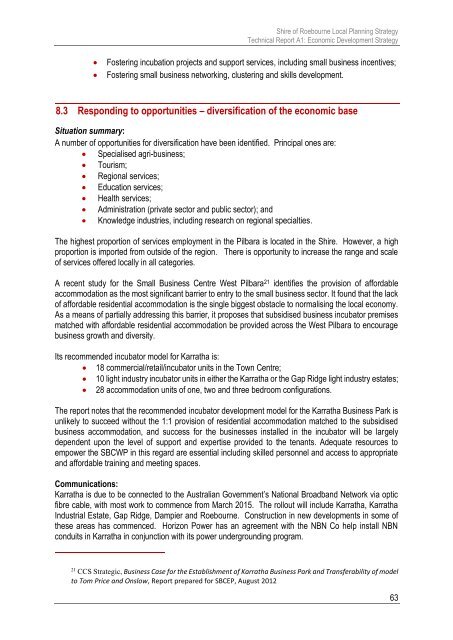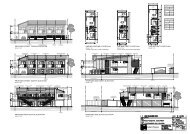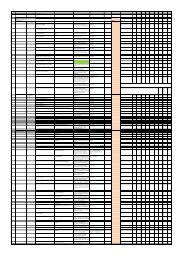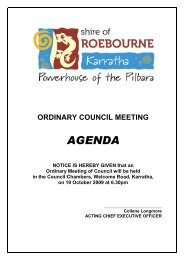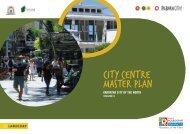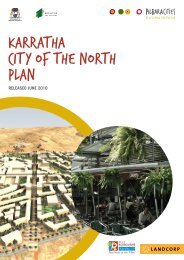Shire of Roebourne Local Planning Strategy
Shire of Roebourne Local Planning Strategy
Shire of Roebourne Local Planning Strategy
You also want an ePaper? Increase the reach of your titles
YUMPU automatically turns print PDFs into web optimized ePapers that Google loves.
<strong>Shire</strong> <strong>of</strong> <strong>Roebourne</strong> <strong>Local</strong> <strong>Planning</strong> <strong>Strategy</strong>Technical Report A1: Economic Development <strong>Strategy</strong>Fostering incubation projects and support services, including small business incentives;Fostering small business networking, clustering and skills development.8.3 Responding to opportunities – diversification <strong>of</strong> the economic baseSituation summary:A number <strong>of</strong> opportunities for diversification have been identified. Principal ones are: Specialised agri-business; Tourism; Regional services; Education services; Health services; Administration (private sector and public sector); and Knowledge industries, including research on regional specialties.The highest proportion <strong>of</strong> services employment in the Pilbara is located in the <strong>Shire</strong>. However, a highproportion is imported from outside <strong>of</strong> the region. There is opportunity to increase the range and scale<strong>of</strong> services <strong>of</strong>fered locally in all categories.A recent study for the Small Business Centre West Pilbara 21 identifies the provision <strong>of</strong> affordableaccommodation as the most significant barrier to entry to the small business sector. It found that the lack<strong>of</strong> affordable residential accommodation is the single biggest obstacle to normalising the local economy.As a means <strong>of</strong> partially addressing this barrier, it proposes that subsidised business incubator premisesmatched with affordable residential accommodation be provided across the West Pilbara to encouragebusiness growth and diversity.Its recommended incubator model for Karratha is: 18 commercial/retail/incubator units in the Town Centre; 10 light industry incubator units in either the Karratha or the Gap Ridge light industry estates; 28 accommodation units <strong>of</strong> one, two and three bedroom configurations.The report notes that the recommended incubator development model for the Karratha Business Park isunlikely to succeed without the 1:1 provision <strong>of</strong> residential accommodation matched to the subsidisedbusiness accommodation, and success for the businesses installed in the incubator will be largelydependent upon the level <strong>of</strong> support and expertise provided to the tenants. Adequate resources toempower the SBCWP in this regard are essential including skilled personnel and access to appropriateand affordable training and meeting spaces.Communications:Karratha is due to be connected to the Australian Government’s National Broadband Network via opticfibre cable, with most work to commence from March 2015. The rollout will include Karratha, KarrathaIndustrial Estate, Gap Ridge, Dampier and <strong>Roebourne</strong>. Construction in new developments in some <strong>of</strong>these areas has commenced. Horizon Power has an agreement with the NBN Co help install NBNconduits in Karratha in conjunction with its power undergrounding program.21CCS Strategic, Business Case for the Establishment <strong>of</strong> Karratha Business Park and Transferability <strong>of</strong> modelto Tom Price and Onslow, Report prepared for SBCEP, August 201263


